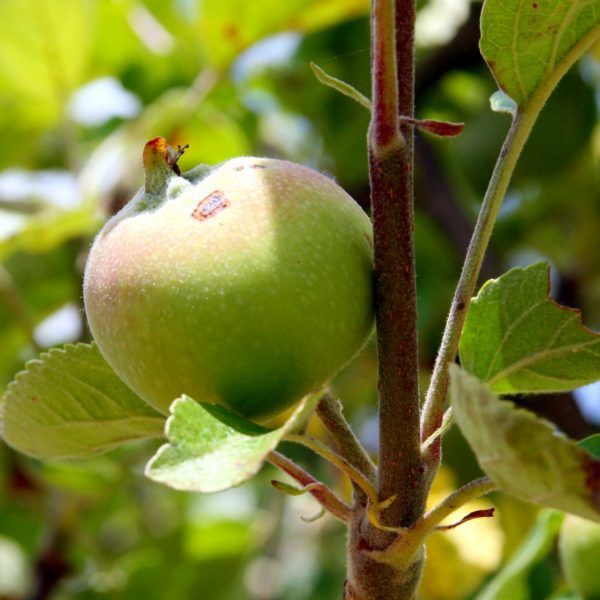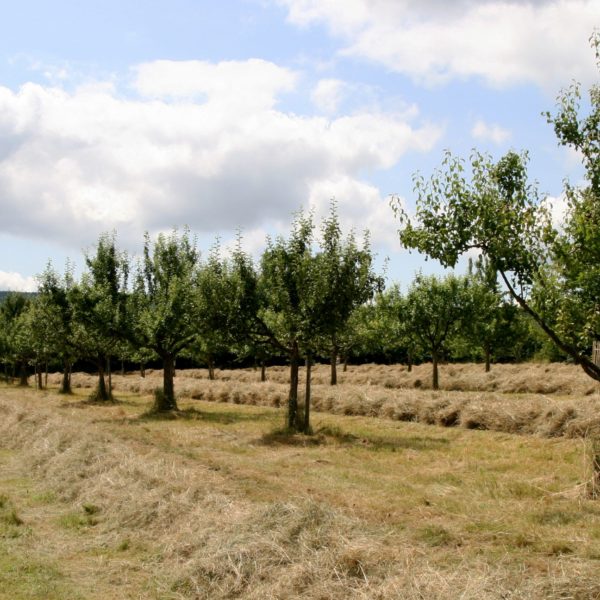Meadow Orchards

In addition to the many fruit-bearing shrubs and soft fruit plants in our cottage gardens, there are over 300 fruit trees all over the museum’s grounds. Most of these trees stand in meadow orchards. The majority are old species of pip and stone fruit and of these, apple trees take the largest share. Contrary to today’s consumer demands which focus on the taste and freshness of fruit, before the Second World War, the processing qualities of a fruit were of greater significance to consumers. And this, apart from harvest yields and cultivation issues, was the main reason for the decline of the old heritage species.
Meadow orchards are relatively modern in the context of greater history: since the 17th century, community orchards on the outskirts of villages and beyond the private gardens were promoted and sometimes even enforced by the authorities. Orchards ensured an effective supplement and improvement of the population’s diet.
Meadow orchards provide an invaluable habitat for a multitude of animals, insects and plants. To sustainably cultivate and preserve orchards, they need to be consistently maintained, topped and pruned. On our grounds, our sheep deliver their beneficial services towards the natural and resource friendly grounds maintenance. Our heritage fruits reveal their hidden qualities when processed to cider, dried fruit, sauces or cooked apple dishes. As a museum, we aim to preserve old heritage fruits as a cultural property and we share our knowledge with our visitors. Events like our Apple Festival invite you to join live presentations and in activities and to try them out at home. You can also learn about the basic rules of how to prune and top a fruit tree correctly by following our fruit pruning trail and reading the charts close to the orchard.



Mit dem Laden der Karte akzeptieren Sie die Datenschutzerklärung von Google.
Mehr erfahren




